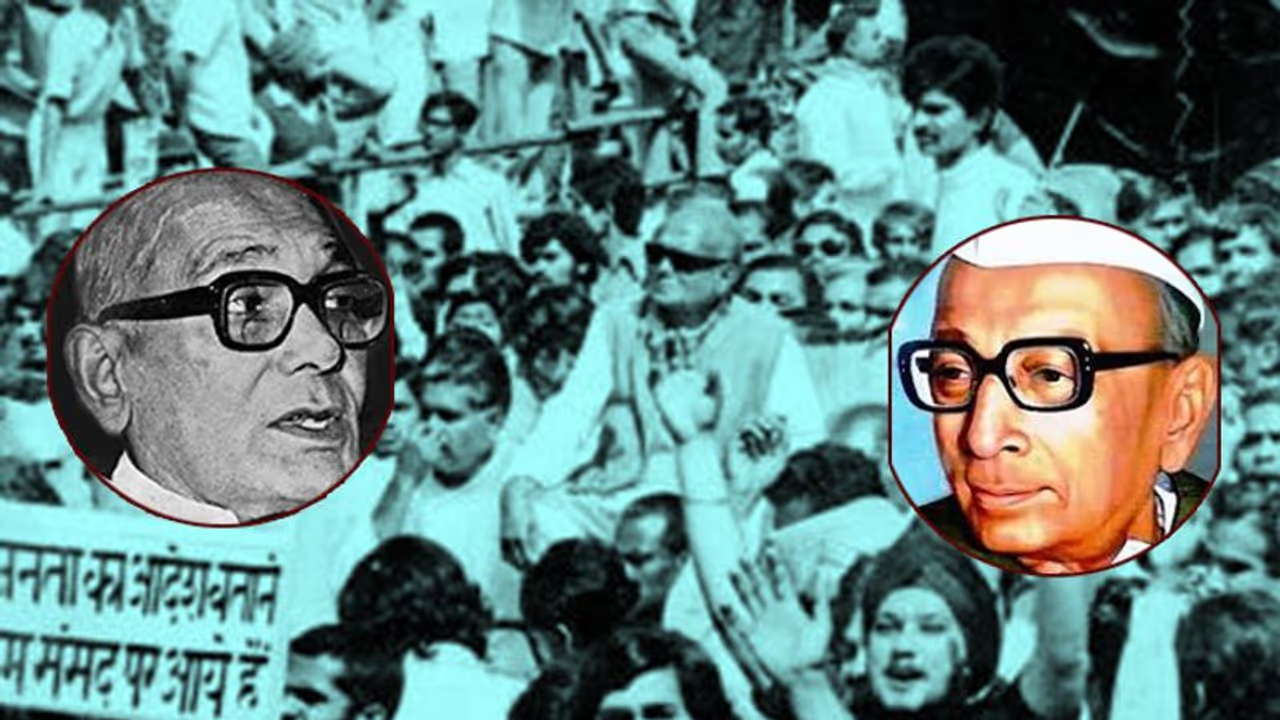This is the story of yet another student movement that altered the course of politics in India. This is the story of how a student protest turned into the Sampoorna Kranti movement against the misrule and corruption of the government
In my last article, I spoke about the Nav Nirman Andolan, a movement started by students which resulted in resignations and dissolution of the government. This inspired movements in Bihar and Akhil Bharatiya Vidyarthi Parishad (ABVP) played a huge role in organising these protests. In fact, Samajwadi Yuvajan Sabha (SYS) and Lok Dal joined in the fight against corruption.
It was on February 18, 1974 that the student’s union of Patna University organized a convention where student leaders from the entire state joined in. They demanded educational reforms and proper food in hostels. It was here that the Bihar Chhatra Sangharsh Samiti (BCSS) was formed which elected Lalu Prasad Yadav as its president. Let us not forget the leaders of today who were a part of the Bihar Chhatra Sangharsh Samiti like Sushil Kumar Modi, Narendra Singh, and Basisth Narayan Singh.
The BCCS had gheraoed the Bihar Legislative Assembly during its budget session held on March 18, 1974. To keep the students away from protesting, the then chief minister of Bihar Abdul Ghafoor convinced the students that he will fulfil their demands. The students did not fall for this trap and they continued protesting. However, police ended up killing three students due to excessive use of their power. So, the BCSS called for a state-wide strike on March 23. BCSS then asked Jayaprakash Narayan (JP) to join them and help them take the movement forward.
But, can you guess the response of Mrs. Gandhi to all of this? On April 1, 1974, she asked, "How can such persons who continue to seek favours from the moneyed people ... dare to speak of corruption?" Well, instead of calming the situation, she fuelled it even more.
On April 8, 10,000 students held a silent procession to protest the atrocities of the government. On April 12, police opened fired at the Paralyse the Government programme which led to the death of many. Yet, the people did not stop protesting. They kept demanding the dissolution of the Assembly, albeit unsuccessfully.
On June 5, a huge protest rally was organized at the Bihar Legislative Assembly which led to 1,600 protestors and 65 student leaders being arrested in the next few days. JP couldn’t take it any longer. So, he asked for the complete participation of the youth in this fight for democracy. And this is where the Sampoorna Kranti movement began. The youth gave it their all and many schools, colleges, and universities were closed. Students boycotted examinations.
The Bihar Movement was a satyagraha where volunteers kept protesting and did not pause even when their demands were not met. They did not stop protesting even when they were arrested. That was their perseverance. So, on June 25, 1975, when Indira Gandhi declared an emergency, the first thing that she did was arrest leaders like JP and Satyendra Narayan Sinha leaving the Bihar movement leaderless and directionless!
The Bihar Movement was to bring Sampoorna Kranti, a revolution to give social, economic, political, and cultural justice to people. This movement trained the leaders and after the emergency led to the formation of the first non-Congress government in India. It was truly a rebellion against the failure of the government to even meet the basic necessities of our lives. This movement, despite not being immediately successful showed that when our youth decide to fight for our country, it is extremely difficult to silence them. They ensure that they fight for their motherland even if it costs them their lives or freedom!
About Abhinav Khare
Abhinav Khare is the CEO of Asianet News Network and also the host of a daily show named Deep Dive with AK. He has a lifetime collection of books and gadgets and has already pinged more than hundred cities around the globe.
He is a tech entrepreneur, who is passionate about policy, technology, economy and philosophy from ancient India. He earned an MS Engineering from the ETH Zurich and an MBA Finance from the London Business School.
